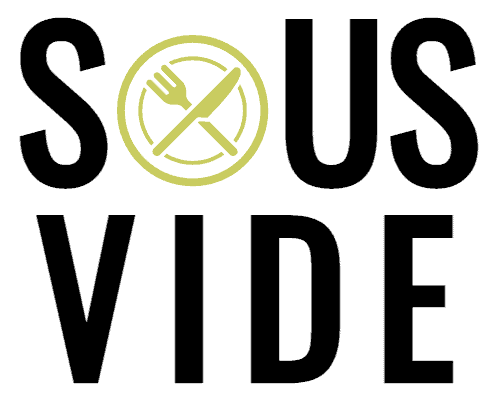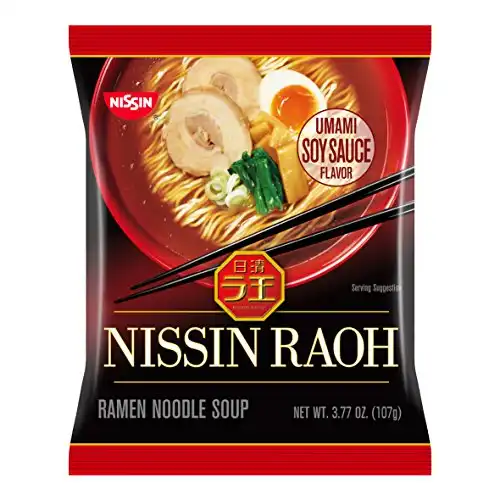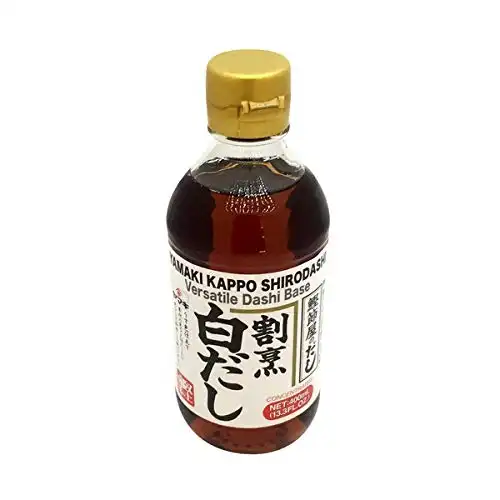The onsen egg found its way from the Japanese hot springs to Momofuku Noodle Bar as a perfect ramen topping. These are similar to poached eggs but cooked in the shell for a silky smooth yet runny egg white with a custard like yolk.
Below we feature four methods to prepare the perfect onsen tamago, with or without a sous vide. If you’re looking for a more traditional ramen egg, check out our recipe for ajitama.
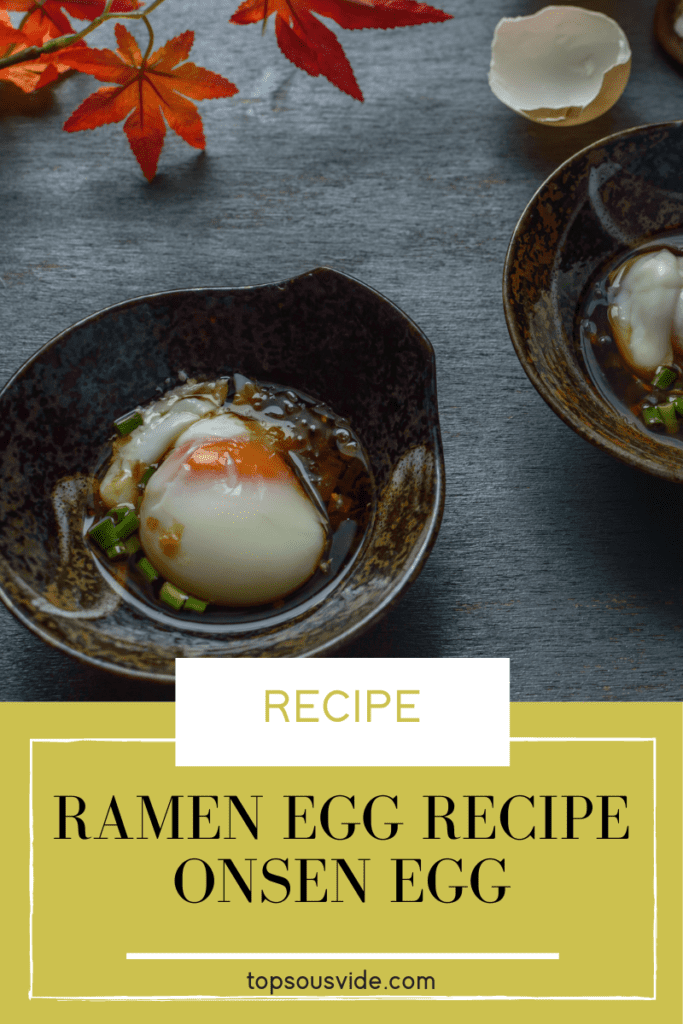
Table of Contents
Hot Spring Origin of Onsen Tamago
Onsen tamago literally translates to hot spring egg.
The onsen, or geothermal springs which can be found throughout Japan, has a rich cultural history that dates back thousands of years. These Japanese hot springs happen to have a sub-boiling water temperature ideal for cooking soft boiled egg.
Somewhere along the deep history of using onsen for restoration and rejuvenation, the Japanese discovered they could drop eggs in the hot spring for some time and return to find a delectably cooked egg. Born were silky soft hot spring eggs.
This method of cooking egg continues today in Japan and is a renowned hot spring resort specialty, where they are often served in the morning simply with a dashi (stock) based broth poured over them.

Ways to Serve Onsen Tamago
The aforementioned preparation of onsen egg with a simple dashi broth is hardly the only way to enjoy onsen tamago. We include an optional recipe for dashi broth in the recipe card which consists of a simple combination of dashi (Japanese soup stock), soy sauce, mirin (sweet rice wine), and touch of sugar garnished with scallion.
Onsen tamago also pairs wonderfully with noodles and don buri style rice dishes.
Eventually, in the early 2000s the proprietors of Momofuku Noodle Bar adopted the onsen tamago as a ramen topping, popularizing the preparation stateside. If you’re curious about the history of ramen, read here. The country of origin might surprise you.
Onsen tamago is generally served at room temperature.

How to Make Onsen Eggs
The fact that the egg needs to be cooked to a tight internal temperature window where the yolk begins to solidify, but the white remains runny makes a sous vide the ideal way to cook these eggs. Below, we provide both sous vide and non-sous vide methods for cooking onsen egg.
High Precision Sous Vide Method
Simply set your sous vide immersion cooker to 145°F (63°C) and cook your eggs anywhere from 45 minutes to an hour and a half, depending on your preference.
The whites will be similarly softly set yet runny, but the texture of the yolk will change appreciably with the added 45 minutes. At 45 minutes of cook time, the yolk will be runny. After an hour and a half of cooking, the yolk will be more custard like.
There’s obviously a lot of room to dial in exactly how you prefer your egg, which may differ depending on how you plan to serve your onsen egg. The freedom to customize your egg precisely how you like it makes this our preferred method for cooking onsen tamago.
Quick Sous Vide Method
If you don’t have the patience or time to wait 45+ minutes for onsen egg, you can follow the delightfully inspiring Ideas in Food method of dialing up the temperature to 167°F (75°C) for precisely 13 minutes.
The drawback here is that there’s less room to customize the egg to your liking.

Cooked In Pot – Using Thermometer
If you have a thermometer handy, simply heat water in a pot to 167°F (75°C) and cook for precisely 13 minutes. Do your best to keep the temp at 167°F (75°C), but don’t stress over some variation.
Substituting a small cooler for the pot can make this method easier. Simply get water in the cooler to the right temperature using a combination of kettled boiling water and cool water. The combination of boiling water to cool water will be roughly 4:1.
Once you’re at 167°F (75°C), gently place the eggs in and quickly add hot water if needed to get back the water temp back to 167°F (75°C). Then simply shut the cooler for 13 minutes and return to your cooked eggs.
Cooked In Pot – No Thermometer
Bring 4 cups of water to a boil in a pot. Remove from heat and add 2/3 cup lukewarm water. Carefully drop in 4 eggs and cover.
Remove eggs after 18-20 minutes depending on whether you prefer the yolk runny or more custard like.
Onsen Egg Cooking Temperature and Time Chart by Method
| Method | Temperature | Time |
| High Precision Sous Vide | 145°F (63°C) | 45-90 min |
| Quick Sous Vide | 167°F (75°C) | 13 min |
| Thermometer | 167°F (75°C) | 13 min |
| Boiling Water | 4 cups boiling + 2/3 lukewarm water | 18-20 min |
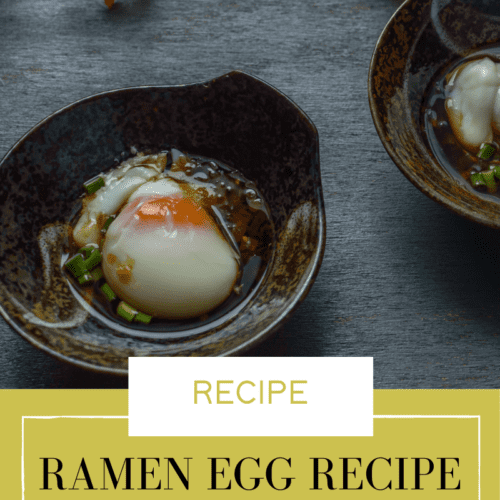
Onsen Egg Recipe (sous vide and no sous vide options)
Equipment
- 1 Sous Vide Cooker optional
- 1 Cooking Pot –or– Sous Vide Container
- 1 Large Bowl for an ice bath
Ingredients
For Egg
- 4 large eggs straight out of fridge
For Broth (optional)
- 2 tbsp mirin
- ½ tbsp sugar
- ¼ cup soy sauce
- ¾ cup dashi (for cold broth) or 2 cups for hot broth
- Thinly sliced scallion garnish
Instructions
Four Options for Cooking Egg
- High precision sous vide method:Preheat water to 145°F (63°C). Gently drop in eggs (shell-on) and cook for 45 minutes for a runny yolk or up to 90 minutes for a custardy yolk. Chill eggs in an ice bath for ~15 minutes.
- Quick sous vide method:Preheat water to 167°F (75°C). Gently drop in eggs (shell-on) and cook for precisely 13 minutes. Chill eggs in an ice bath for ~15 minutes.
- Pot with thermometer method:Preheat water to 167°F (75°C). Gently drop in eggs (shell-on) and cook for precisely 13 minutes. Monitor water temp during the cook and add kettled boiling water if needed to keep the temperature as close to 167°F (75°C) as reasonably possible. Chill eggs in an ice bath for ~15 minutes.
- Pot without thermometer method:Bring 4 cups of water to a boil in a pot. Remove from heat and add 2/3 cup lukewarm water. Carefully drop in 4 eggs and cover. Remove eggs after 18-20 minutes depending on whether you prefer the yolk runny or more custard like. Chill eggs in an ice bath for ~15 minutes.
For Dashi Broth (optional)
- While eggs are cooking, simmer mirin in a small saucepan and add sugar stirring to dissolve. Stir in soy sauce and bring to a simmer.Pour into a container to place in the refrigerator to cool.
- When ready to serve, for a cold broth combine 1 part mirin-soy sauce mixture to 3 parts dashi. Unused mirin-soy mixture can be refrigerated for up to six weeks.
Cracking Eggs & Serving
- Under a gentle stream of cold water, carefully crack egg starting at the bottom/flatter end of the egg. Slide egg out of the shell and into a small serving bowl when enough shell is removed. Pour broth over egg, garnish with scallions, and enjoy!
Notes
Shelf Life
Onsen eggs can be kept in their shells for up to two days in the fridge. The mirin-soy mixture will last up to six weeks in the fridge. Simply mix with dashi when needed.
Reheating Onsen Tamago
Reheat egg with shell in a water bath at 140°F (60°C) for 10 minutes.
Expert Egg Boiling Tips
- Make sure the eggs are fully covered by water in the water bath
- If you’re not using a sous vide, the heavier the pot, the better it will retain heat
- Start peeling the egg from the flatter end of the two ends
- The fresher the egg, the more difficult it will be to peel
- The fresher the egg, the longer it will take to cook
- Place egg in an ice bath immediately after cooking to help cool it quickly and make peeling easier
- Running cool water over the egg from a faucet while peeling can make peeling easier
- Adding white vinegar to the water bath will help make peeling an egg easier. Use 1 tablespoon for a medium size pot. Using a small amount of baking soda instead can help similarly.
Additional Reading
There are a lot of variables at play when cooking eggs, including the altitude at which you are cooking. If you’re in the mood to fully geek out on the science behind these variables, read Boiling an Egg from our friends at University of Exeter.
It may prove useful in tweaking the recipe to your particular conditions to cook the perfect egg.
Ramen Options
Since we’ve emphasized the use of onsen tamago as a ramen egg, it only seems right we provide a couple ramen options we enjoy.
Dashi & Mirin Options
Below you’ll find dashi and mirin option for the onsen tamago broth recipe provided.
Onsen Eggs FAQs
The tamago (egg) is generally served at room temperature, though the food it is served atop or with can be either hot or cold.
Yes. It is a type of soft boiled egg. Where it stands out from other soft boiled egg is that the yolk can be semi-firm (custard like), while the egg white is silky soft.
Perhaps the most common way to eat the silky soft eggs is in a simple dashi broth served at room temperature. The dish is commonly served at breakfast. The tamago also does wonderfully atop noodles like ramen and don buri style rice dishes.
The simplest method is to cook 4 eggs for 13 minutes in water of 167°F (75°C) temperature. Four detailed methods are provided in this article.
Onsen is Japanese for hot springs. The temperature of many of the hot springs in Japan are perfect for cooking soft boiled eggs. The Japanese figured this out and began to cook eggs in the hot spring; thus creating hot spring eggs, or onsen eggs.
Other Recipes
Hungry for more recipes? See below!
